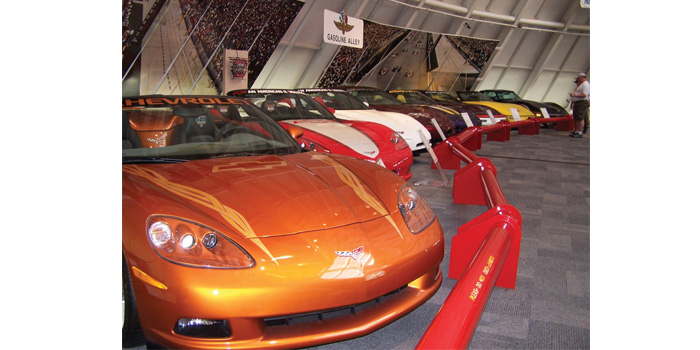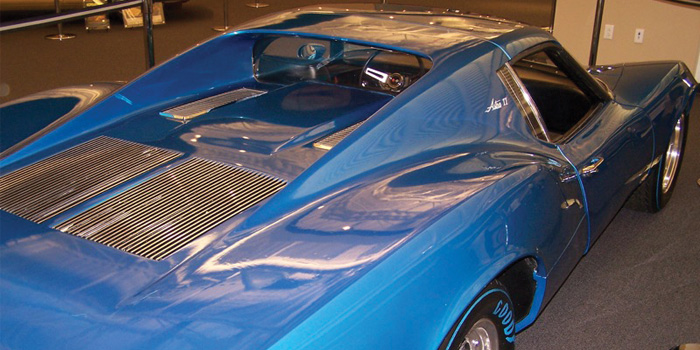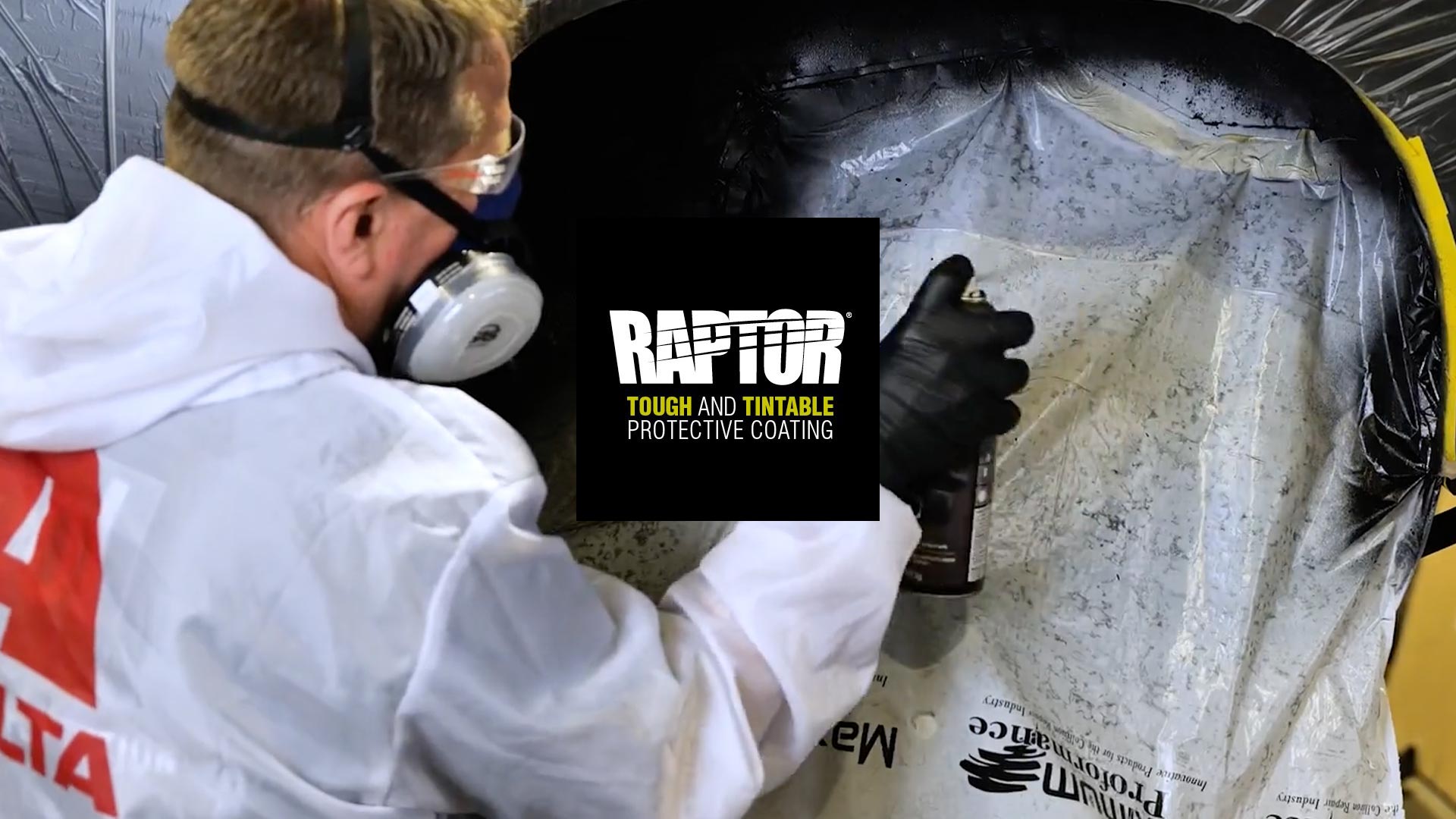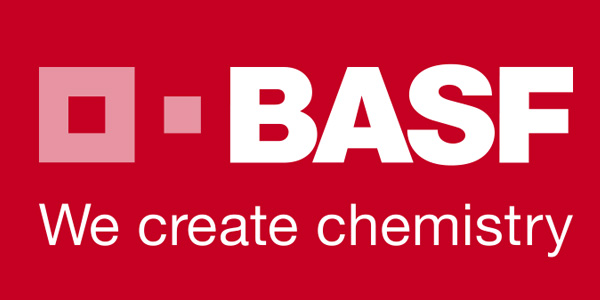On one Saturday afternoon in April, after having driven most of the morning, we pulled into the parking lot. I was extremely excited to get out of the house for the weekend. Exiting the car, the spring air hit my face with its warm embrace and the sun was bright in the noontime sky. After driving for such a long time, it felt good to stretch our legs and walk the half-mile from our parking space, through an oddly placed tunnel and into one of the happiest places on Earth. Well, at least for me it’s one of the happiest places on Earth.
As we approached this manmade monstrosity, we began to realize the sheer size of the facility. Following the signs for the appropriate entrance, we circled the one million-square-foot facility that sits on 212 acres in the Kentucky countryside. Smokestacks shining in the sun and the neutral gray buildings with blue accents belie the nature of its existence in the center of the U.S.
Standing in front of me is the holy grail of today’s modern American sports car birthplace: the General Motors assembly plant in Bowling Green, Ky. This is the very location where every Corvette roars to life for the first time.

Vette Crazy
The starting point of the Corvette assembly plant tour begins in the reception area in front of the current year’s slate of Corvette paint colors. As I stood there, mesmerized by the different color options available, I had to stop myself from drooling all over my lovely wife who was putting on her best smiley face for me at the time. This was not really her thing, you know.
As we explored the assembly plant, our tour guide showed us through the step-by-step processes, quality checks and the numerous procedures that General Motors employs to ensure that each Corvette is perfect when it leaves this facility. Our tour guide also stated that General Motors is doubling the size of their paint facility in the Bowling Green plant and construction is currently underway.
Leaning over and attempting to use my best “quiet voice,” I said to my wife, “Just think of all of the different color combinations they can produce when this project has been completed!” She smiled back at me sweetly and nodded her head indicating that she knew I was way too obsessed with Corvettes for her to attempt to have a rational conversation with me for the rest of the weekend.
Which leads me to this month’s topic: refinishing. This month, instead of focusing all of our attention on the manual processes of refinishing, we’re going to take a different look at the subject and talk about the business relationships between your paint manufacturer and your shop.
If you’ve been with a paint manufacturer for any length of time, your team should be an expert in the applications of their products and how to achieve a factory-like finish every time. Which, by the way, is the first thing your customer is going to look at when they get their vehicle back. This all sounds good in theory, but what about in practice?
Refinish Planning
The best way to make a process efficient is to analyze each step and make sure it works in your facility. Sure, there are best practices that need to be followed, but you need to review your processes to see where the bottlenecks are and what actions are necessary to correct them. The refinish planning process also needs to work in conjunction with your existing damage analysis and parts procurement processes.
Below are items that need to be considered in your refinish processes;
- Color identification – Identify the color in the damage analysis process. Verify the finish type, color code, build date and the VIN number up front. Determine if you’re going to be blending or refinishing an entire panel up front.
- Refinish repair mapping in damage analysis – Define exactly what is being accomplished on the RO in relation to the refinish process. Understand the customer’s expectations and manage them with the reality of what exactly is going to be accomplished by the team. Don’t forget to identify the borders of the repair area on repaired panels. Finally, did you promise to “touch-up” an area? Make sure you note it on the RO so it doesn’t get missed, even if you’re not charging the customer for the repair.
- Parts management – Nothing, and I mean nothing, aggravates me more than having a conversation with a painter who just completed refinishing the wrong part for the vehicle. What a waste of money! Are you doing 100 percent teardowns and mirror-matching your parts? If not, tomorrow is not soon enough to begin planning to change your production processes. Parts management also includes prepping the parts before they enter the spraybooth. Make sure to quality control every panel before they leave the body technician’s stall. Quality control is an activity that everyone needs to actively participate in during the production process. When is the best time to catch an issue? Before it happens or, at the very least, before it causes an issue downstream.
- Finally, after you’ve provided a perfect panel to your painter and he has completed a flawless paint job, make sure you manage that panel to avoid any unnecessary damage to the completed part. Stage your parts securely and safely until reassembly takes place.
Depending on your paint vendor, you may have opportunities available to you to support your organization’s continuous improvement efforts, professional training and additional services (free or at an additional cost). I discuss each of these opportunities at length in the next section.
Paint Partner
There are so many considerations when it comes to picking your business’s paint partner. The decision to change should not be taken lightly. A top-tier paint manufacturer can provide service, support, consulting, training, repair process analysis and expert guidance for you and your team. In addition, they may have specialty tools that you can use as leverage because of your investment into their products. Service offerings can vary greatly between vendors, and not all their services are necessary or even needed to support your facility. However, you should consider all of the services available because your current situation may change and it would be nice to know that you have a vendor that has tools in place to help you.

Here are some considerations when choosing a paint partner:
- Reputation – This industry is small, shrinking and very tight-knit. Break out your Rolodex (did I just date myself?) or your favorite contacts application and start calling around to your industry counterparts who use a different paint manufacturer. Ask them for their opinions on the quality of their paint company’s products and the services they provide. Has the company been there for them in the past, and what is their reputation for service, support and product innovation in the marketplace?
- Service and support operations – Ask your shop friends about the support experiences they have had with their paint company. Don’t be afraid to call shops in other parts of the country to determine if the support is the same or varies widely from geographic location to geographic location. A company that has their support system together will have a well-defined infrastructure in place and consistent delivery support to all of their customers. It’s all good when you buy and apply their paint products, until you need technical support or have a possible warranty claim. Do you have to make repeated calls to get someone out to your shop, or are they going to be in your shop the next day to help you through an issue? Again, ask for specific examples, both bad and good.
- Products – Are they innovative with their product lines, or are they still preaching to the market that lacquer is the best product for today’s vehicles? How wide and deep are their product lines? Do they have product options for you when the humidity and ambient temperatures are high? How about when temperatures are cool and you don’t have heat in your booth? Can they provide you with in-shop demos of their products before you commit to their product lines? Every shop is different, so ask the questions that are relevant to your situation. As always, cost is a factor, but you need to understand the true cost of ownership. If you are paying a little more for quality paint products, an excellent support network, free professional training, etc., is it really worth going to an inferior product line to save a few bucks?
- Professional Services – This is where you can really leverage your investment in your paint purchases. The range of services provided varies depending on the manufacturer and the size of your organization. The return you’ll get is worth every penny. Speaking of every penny, ask questions to understand the cost of these add-ons and if they’re included in the business relationship.
- Training – I don’t care if you have the Pablo Picasso of automotive painters in your spraybooth, no one is an expert with a product they’ve never applied before. In fact, even if you do have “the best painter in town,” they could still use ongoing training to ensure they’re utilizing the latest methods to properly apply your paint products. By the way, do you have any idea how many shops I’ve spoken with that say they have the best painters in town? One of you does, and the rest need ongoing training. If you don’t know for a fact which one you have, assume you have the latter.
Some of the best educational sessions I’ve attended were provided at the expense of a paint manufacturer. What type of training does your paint partner provide to your staff, and at what cost to your business? Do they have management training, damage analysis training and other learning opportunities available for your entire staff? What happens when you need to replace your painter? Can you get a spot in the next available class, or will the paint company come to your facility to work with the new person? Are they able to provide or help you find a temporary painter if you find yourself in a difficult situation? Can they help you perform a difficult color match? If a new product comes out in between training courses, will they provide you the information you need to leverage their products successfully in your spraybooth? How will the information be delivered to you and your team?
Let’s throw down all of our cards on the table folks – we all suck at attending training courses. Most of us avoid attending professional training courses at all costs. Do not deny your entire team the opportunity to learn something new and get them into training courses. If your staff doesn’t care to take the classes, change the culture of your business. The numbers and types of training courses provided by paint manufacturers can be vast and may even count toward other industry designations. Does your customer get the greatest value from your shop if you do not train and provide a lifetime warranty?
Conclusion
The last stop on the Corvette factory tour is the dyno station where they perform a complete set of diagnostics tests to ensure a perfect high-powered show of American horsepower is ready to be delivered. The car reaches speeds of 80 mph in the secure booth, and the motor sounds like a symphony roaring next to you. All I could think of as I was standing there was, “That Night Race Blue Metallic” paint is gorgeous.
I’m pretty sure I need professional metal therapy.
Contributors to this article include Ted Williams, manager of business consulting – Sherwin-Williams; Mark Hebbeler, independent consultant and collision industry expert; Ben Sampson, account manager; and Harry Christman, brand manager – Axalta Coating Systems.













